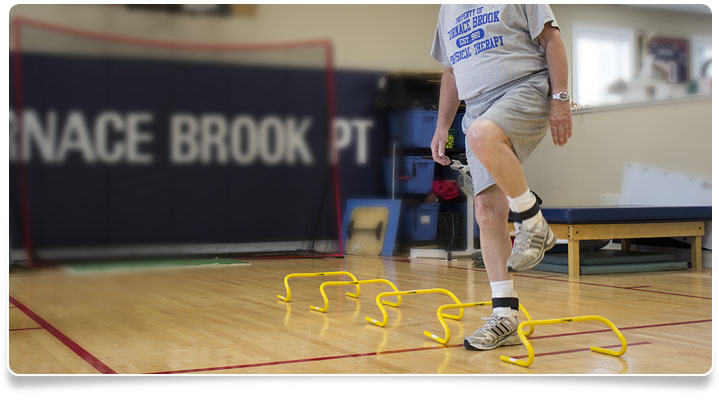Ask Us A Question
Email a general orthopedic or
sports physical therapy question
and we will answer it!
Hip Replacement
Total Hip Arthoplasty (THA), or a hip replacement, is an ever-growing facet of the medical world. First performed in the 1960s as a more permanent solution to end-stage degenerative joint disease in the hip, the prevalence of THAs being performed each year continues to sky rocket. Considered one of the “most successful and cost-effective interventions available in modern medicine”, many patients are able to return to a lifestyle of physical activity that was simply too painful to maintain before surgery.
When a Total Hip Arthroplasty is Indicated
Used in the care of severe degenerative joint disease due to underlying osteoarthritis, rheumatoid arthritis, or avascular necrosis, a total hip arthroplasty is most commonly indicated for patients presenting with the following problems:
- PAIN: OFTEN IN THE FRONT OF THE HIP OR GROIN AND WORSE IN WEIGHT-BEARING
- DECREASED MOBILITY: RANGE OF MOTION LOSS AND JOINT STIFFNESS
- IMAGING FINDINGS CONSISTENT WITH SEVERE INTRA-ARTICULAR DISEASE PROCESSES
Typically, this surgery is performed at an Acute Care Hospital, such as Beth Israel Deaconess Milton Hospital, New England Baptist or Mass. General Hospital, and the patient remains in inpatient care for approximately 2-3 days. Efforts will be made to quickly get the patient moving with the assistance of either crutches or a walker.
After Hip Surgery
Following hip surgery, depending on the approach and type of prosthesis used by the supervising surgeon, precautions regarding certain motions or positions may be put into place for a variable amount of time. A posterolateral or anterior approach are commonly used. Your surgeon and his team will instruct you more completely in those regards.
Approximately 2-4wks after the initial procedure, most patients are referred to outpatient physical therapy, such as Furnace Brook PT, to continue their rehabilitation. There, they can expect to undergo an evaluation identifying their biggest individual deficits at the time as well as education and instruction on their plan of care for the remainder of the rehab process.
Physical Therapy Strategies After Hip Surgery
Post-operative treatment often includes, but is not limited to:
- Soft tissue mobilization and appropriate stretching of tight, tense muscles to minimize restrictions and improve mobility
- Active and passive range of motion to restore hip motion
- Glute and thigh strengthening
- Core stabilization – important to train the entire lumbar-pelvis region to support the hip
- Aquatic therapy – allows for re-integration of activity with minimal stress on joint
- Gait and Balance Training – normalization of gait patterns and restoration of weight-bearing stability
- Functional strengthening – re-training of functional tasks such as standing from a chair and stair management
When the outcome is reached, patients can reasonably expect to be capable of returning to the majority of their pre-operative activity. This includes golf, doubles tennis, swimming, hiking, cycling, walking, exercising, and work. In most cases, though not set in stone, repetitive high impact activity (such as running) is not recommended in order to preserve the integrity of the implant.
If you’ve had a total hip arthroplasty and are in need of rehabilitative physical therapy, you can trust Furnace Brook Physical Therapy. Contact us today for an appointment at 617-770-4167. We serve Quincy, Massachusetts and surrounding areas.

